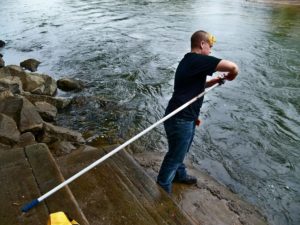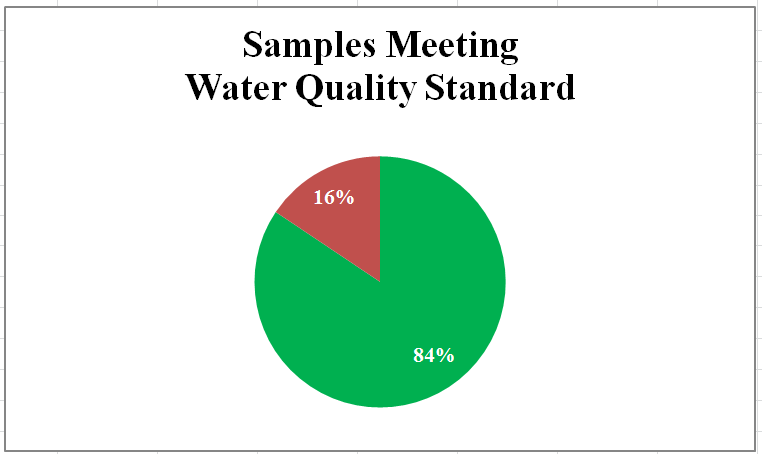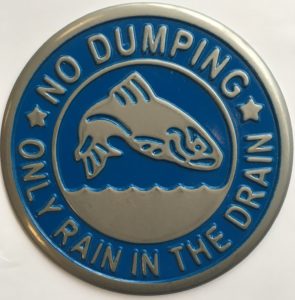The results are in: This past Labor Day marks the 4th year of the James River Association water monitoring at popular recreational river locations on the James and its tributaries. Each week between Memorial Day and Labor Day, trained and dedicated volunteers watchfully collect river water samples at designated locations where the public is known to frequent for recreational paddling, fishing and swimming. The results are immediately verified for quality assurance and then uploaded to the James River Watch webpage in order for YOU to safely enjoy your local river play spots and fishing holes.
and swimming. The results are immediately verified for quality assurance and then uploaded to the James River Watch webpage in order for YOU to safely enjoy your local river play spots and fishing holes.
Weekly water samples test temperature, water cloudiness or turbidity, and E. coli bacteria. In high concentrations, E. coli can be harmful to human health. Out of approximately 1,100 samples collected in the last four years, 84% revealed that the water in the James and its tributaries was safe for human recreation. The other 16% of samples that showed high levels of bacteria were primarily found after rain events, which is the most common conduit for bacteria pollution.
The James River W atch results demonstrate that our local streams and rivers are safe for swimming, fishing and boating most of the time, but that extra caution is necessary after rainstorms.
atch results demonstrate that our local streams and rivers are safe for swimming, fishing and boating most of the time, but that extra caution is necessary after rainstorms.
These water quality data are provided in part through support from your Virginia Department of Environmental Quality’s Citizen Water Quality Monitoring Program grant program. James River Association partners in James River Watch in monitoring include Peninsula Master Naturalists, James City County, James River Park System, Virginia State University, Goochland County, Town of Scottsville, Rivanna Conservation Alliance, Boxerwood Nature Center and Woodland Garden and Twin River Outfitters.
Virginia and neighboring Chesapeake Bay states have set a goal of restoring the Chesapeake Bay and its tributaries by 2025 through a long term plan encompassing the 64,000 square mile bay watershed. The James River makes up 10,000 square miles of this watershed, and according to the Chesapeake Bay Program, stormwater is the fastest growing source of pollution in the Chesapeake Bay watershed.
Water quality monitoring data shows that bacteria levels increase after rainstorms, and that stronger stormwater controls are needed to prevent pollution.To ensure that the James River is safe, we need to  strengthen and adequately fund state and local programs to address polluted runoff from urban and suburban stormwater.
strengthen and adequately fund state and local programs to address polluted runoff from urban and suburban stormwater.
Citizens can improve the health of the river by taking simple steps to minimize stormwater pollution at home. Rain gardens, native trees and plants can help soak up stormwater and prevent pollution from entering storm drains and harming local streams and the James River. Learn more about how you can prevent pollution at home by joining the River Hero Homes program. Citizens can also help the James River Association advance solutions for clean water with elected officials by joining our Action Network.
